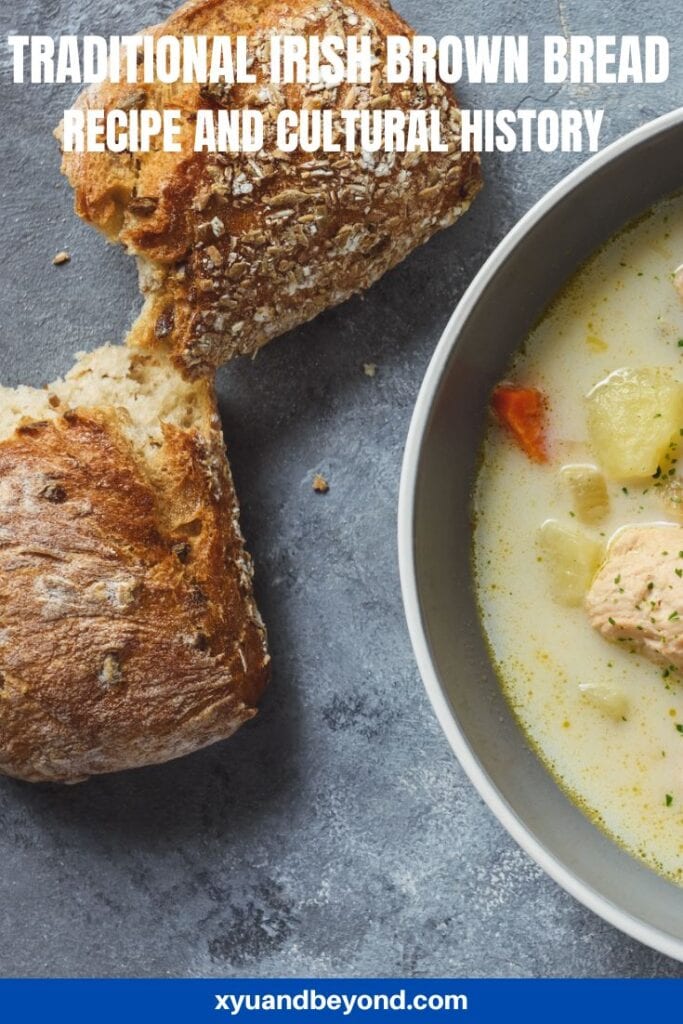Irish Soda Brown Bread History and a recipe
One of the most popular food items when you are on your trip to Ireland is Irish brown bread. You will find it served virtually everywhere. Irish brown bread is a tale of the mixing of food cultures – the Irish and the new world. Irish brown bread – that gloriously chewy nutty slice of brown perfection served with a deep rich seafood chowder or a bowl of beautiful prawns – is known as the food of the gods and a staple in Irish food culture a quick bread made by your own hands.
Ireland is renowned for its rich culinary heritage, and one dish that perfectly encapsulates the country’s warmth and charm is Irish brown bread. This hearty and delicious bread has been a staple in Irish households for centuries, offering a taste of tradition and the perfect accompaniment to Irish Stew. There is nothing better than celebrating St. Patrick’s Day in Ireland with a slice of homemade Irish brown bread.
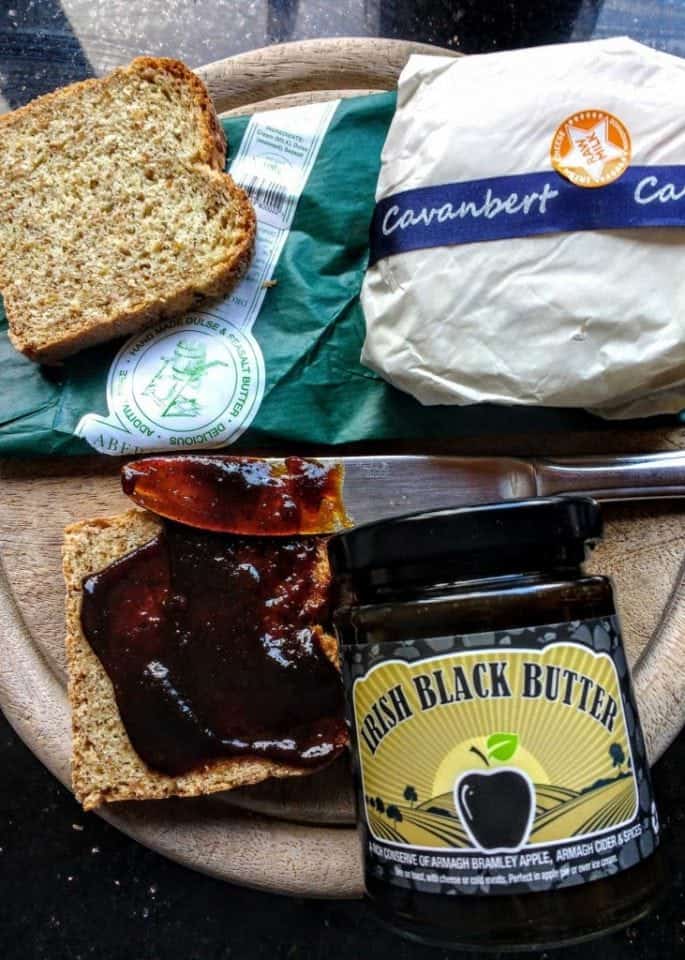
As travellers and wanderers in many countries in Europe, we often come across dishes that we wish we could create at home. Irish bread is really easy to make at home, no kneading is required, no special equipment and you can have warm Irish quick bread from the oven on a daily basis.
Slathered with rich Irish butter and chewed slowly the flavour of the Irish bread compliments virtually anything it is served with. Rich seafood pates or smoked fish are enhanced when they are draped over some Irish brown bread. Irish black butter or a simple homemade jam takes on a new dimension when slathered with butter on some Irish brown soda bread.
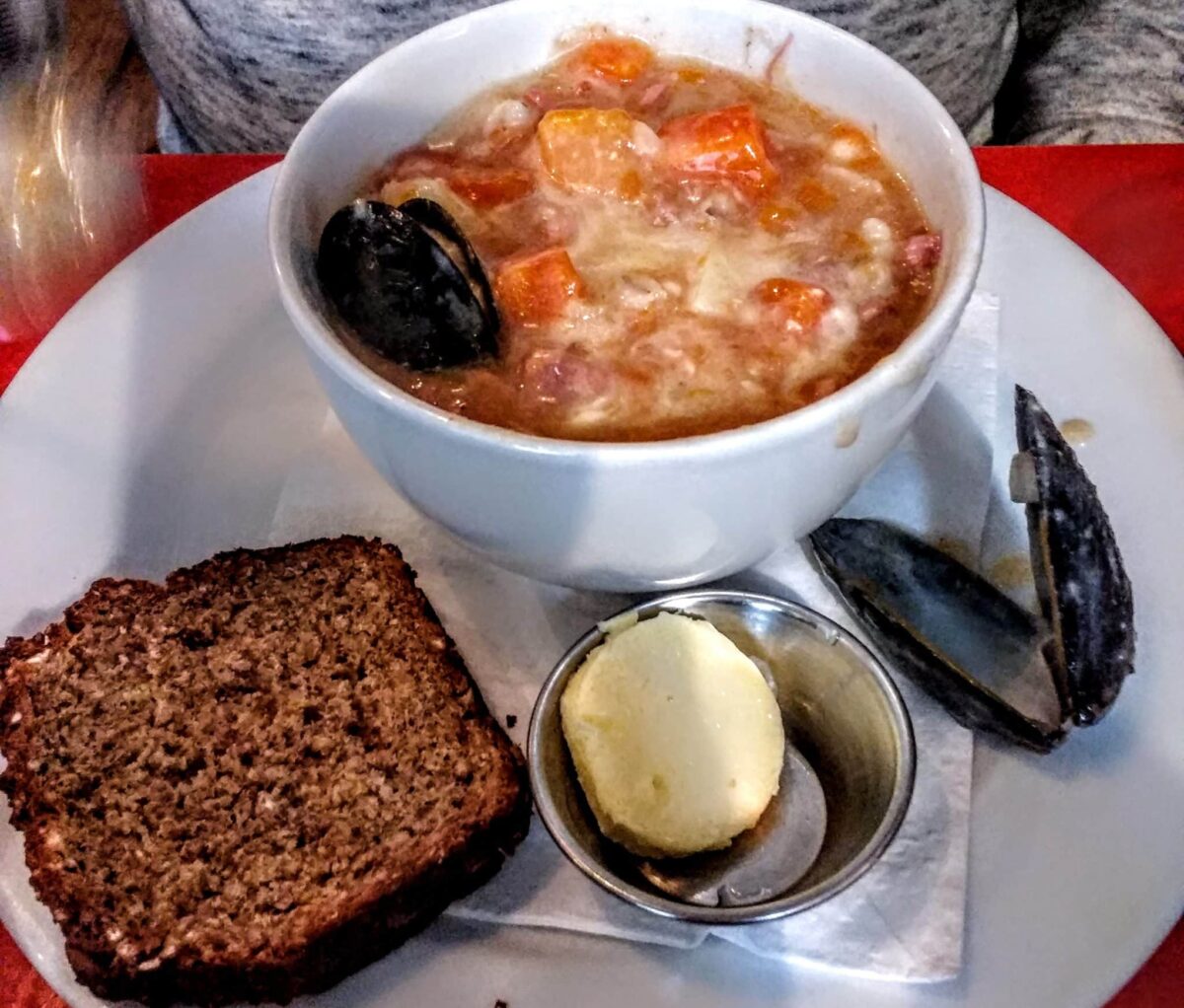
There are many things Ireland is known and famous for – its pubs, friendly residents and jaw-dropping scenery. Food on the other hand is not usually the first thing you think of when travelling to Ireland but it is superb. I mean how can anyone pass up a Full Irish breakfast of egg, bacon, sausage, mushrooms and tomato served in an Irish farl cousin to the traditional Irish brown bread? This is also known as an Ulster Fry in Northern Ireland. Ireland also has a superb coffee culture and in Dublin there are dozens of fantastic Coffee shops that serve traditional Irish food, scones, breakfast and other Irish treats.
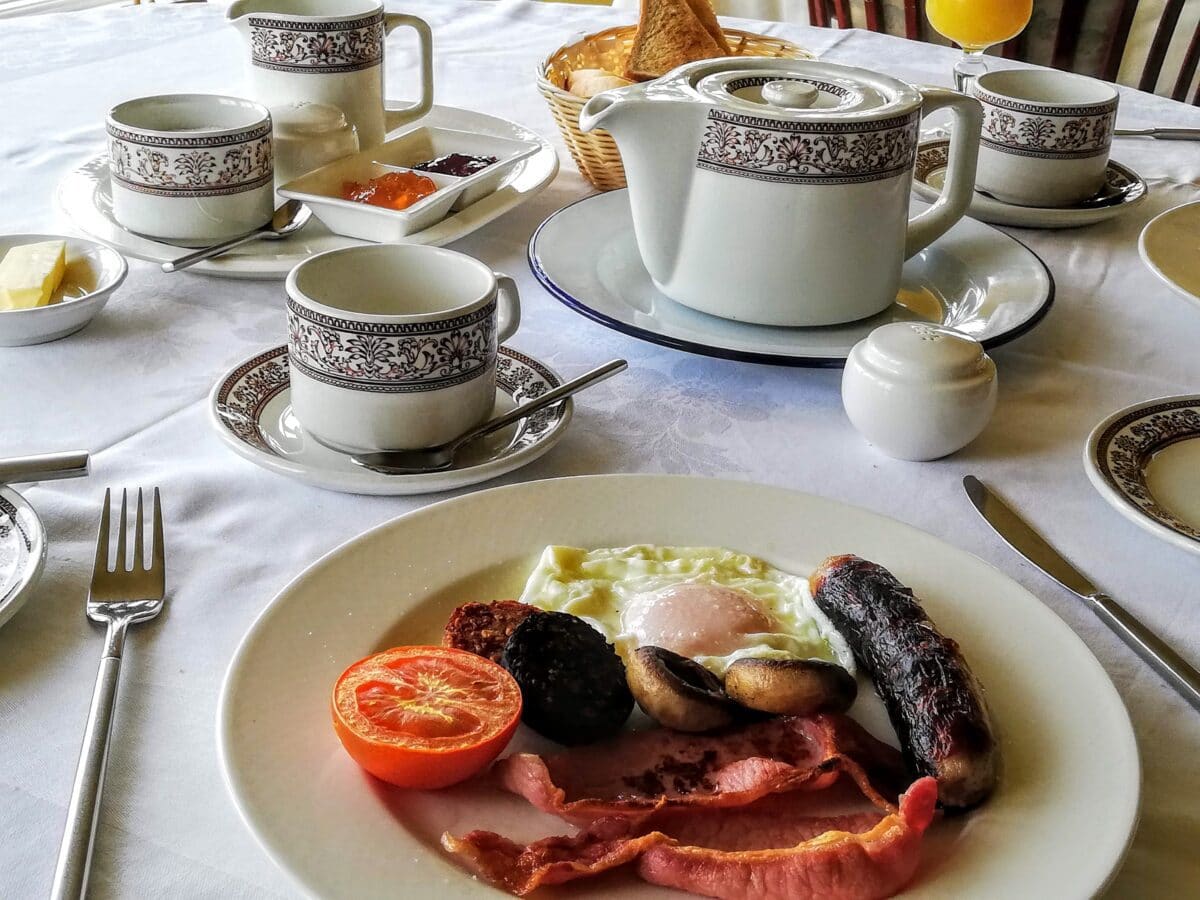
Ah, Ireland with its traditions held close and the memories of the lovely bread baked by your mum or mammy hot and fresh from the oven a nearly daily treat.
Traditional Irish soda bread history
Soda bread was first made in Ireland in the Victorian era. Nicolas Leblanc developed baking soda after copying indigenous people’s methods as a leavening agent. He refined the process and developed what would become baking soda.
Irish soda bread vs brown bread
Irish Soda Bread and Brown Bread are two distinct types of bread, each with its own characteristics. Here’s a comparison between the two:
Irish Soda Bread:
- Leavening Agent: Irish Soda Bread is leavened with baking soda, which reacts with the acid in buttermilk to create carbon dioxide and make the bread rise.
- Ingredients: Typically made with flour, baking soda, salt, and buttermilk. Sometimes includes additional ingredients like raisins or currants.
- Texture: Soda bread has a dense and crumbly texture due to the chemical leavening process.
- Appearance: It often has a distinct cross cut into the top before baking, which is both decorative and functional, helping the bread to cook evenly.
- Flavor: The flavor is mildly tangy, with a characteristic taste from the combination of buttermilk and baking soda.
Brown Bread:
- Leavening Agent: Brown bread can be leavened with baking powder or baking soda, depending on the recipe. It may also use yeast.
- Ingredients: Typically made with whole wheat flour or a mix of white and whole wheat flours, buttermilk or milk, baking powder or baking soda, and sometimes molasses or honey for sweetness.
- Texture: Brown bread has a denser texture than white bread, but it’s generally lighter than traditional soda bread.
- Appearance: It doesn’t usually have the distinctive cross cut and may have a darker color due to the inclusion of whole wheat flour.
- Flavor: The flavor is heartier and nuttier compared to white bread, often with a slightly sweet undertone if molasses or honey is used.
Irish Brown bread history
Where did soda bread originate? Sorry to say this but the Irish soda bread history is not actually originally Irish. In fact, bread that used soda to raise it was actually invented by the Indigenous people in N. America. Now before you get on your high horse and start throwing out insults I can honestly state that in my opinion Irish brown soda bread or Irish bread is superior to all others across the world. The traditions of Irish Soda bread and the fact that it is so culturally ingrained in the Irish food lexicon have made it the superior product you can buy or better yet make for yourself.
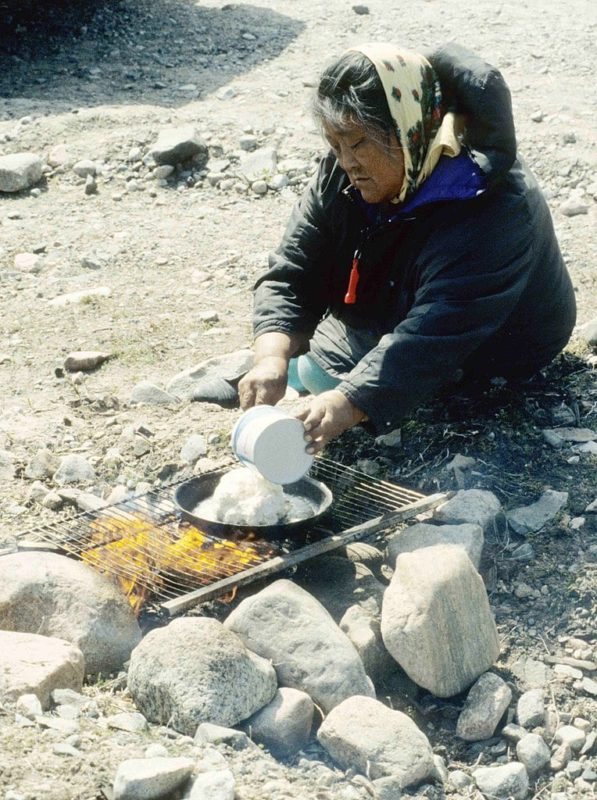
The truth is that it was First Nations people who invented the chemical leavening that is used in soda bread. They used fire ashes to lighten up their corn and grain cakes, which were then cooked over an open fire or right in the ashes themselves. So this was in effect the first discovery of “soda” to lighten up heavy grain cakes. I can’t speak for the flavour of that bread but I can certainly imagine it.
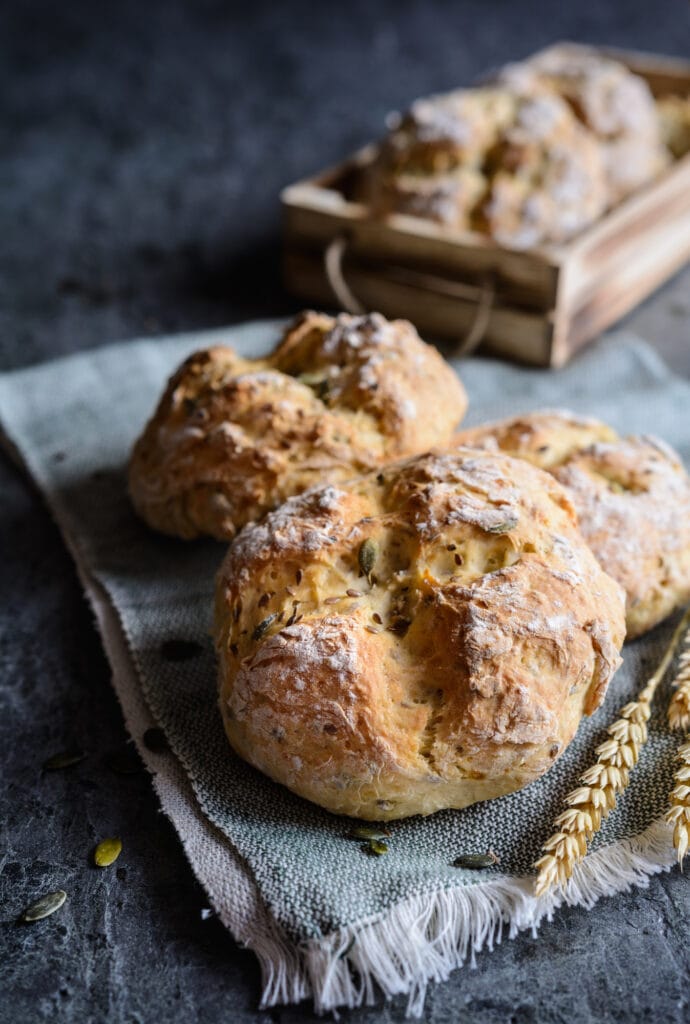
It was in the 1750s that cheap wheat became a staple in Ireland. The problem with Irish wheat, however, is that it is “soft” wheat and doesn’t work well with yeast to raise it. Soft wheat only contains around 8-10% protein whereas bread made with wheat produced in the US is “hard” wheat and contains upwards of 14% protein. It is this protein that forms the bonds of gluten that allow the bread to rise and incorporate more air.
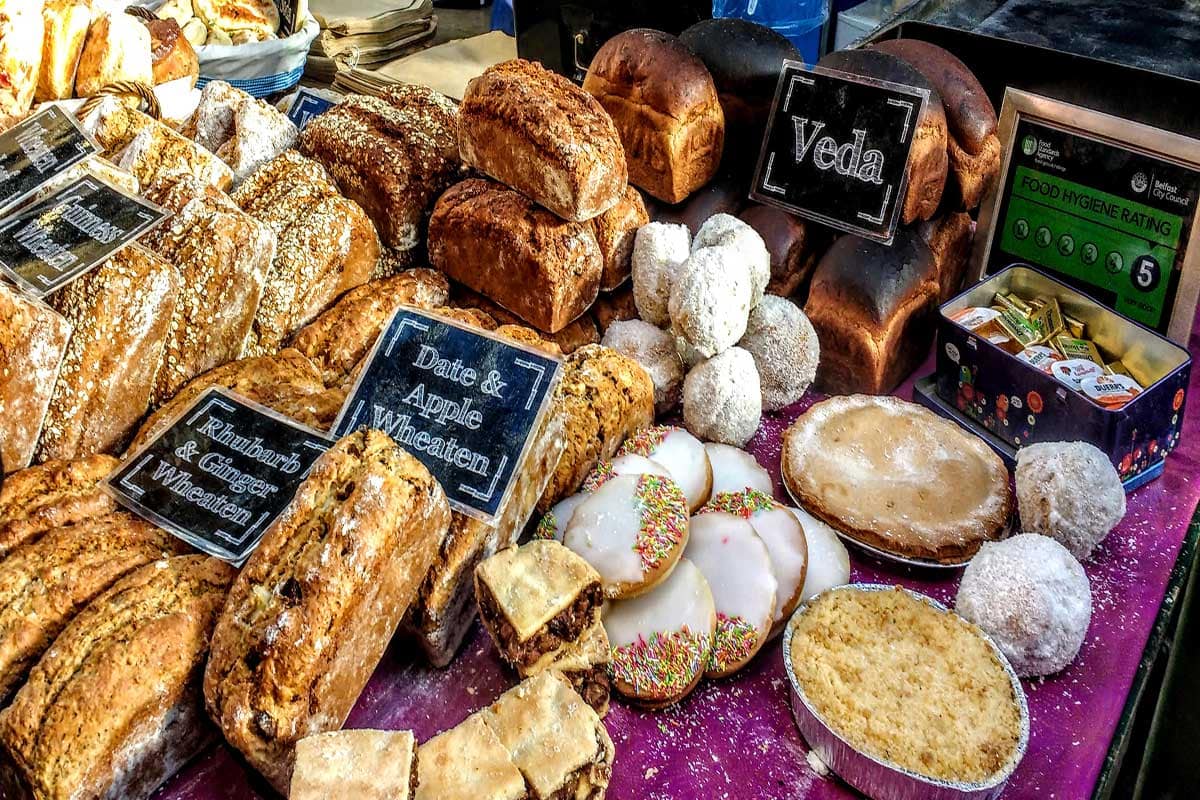
What is authentic Irish Brown Bread?
It wasn’t however until the early 1840s that refined baking soda was introduced to Ireland and it instantly popularized Irish Brown Bread. To clarify the terminology here are the differences:
Traditional Irish Brown bread (or Wheaten Bread as it is known primarily in the North of Ireland) – is made from the whole grain of soft wheat, baking soda, either sugar, treacle or even honey for a touch of sweetness and of course the acid which is usually buttermilk or sour milk. Occasionally you might find the top of the bread sprinkled with rolled oats but that is not particuarly traditional.
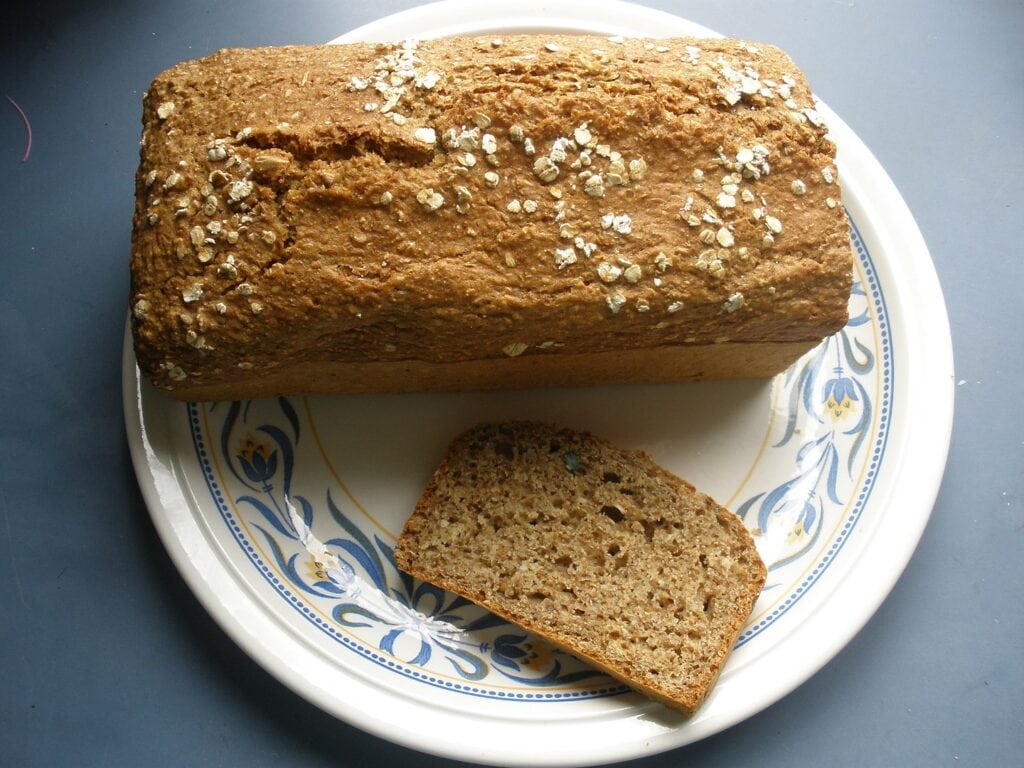
Irish Soda Bread – that isn’t brown and is made from the bleached grain of soft wheat. There are several cooking techniques that differentiate the bread as well.
Cooking techniques for Irish Breads
#1 Irish soda farls griddle bread – this is white flour that when mixed with traditional soda ingredients like baking soda, buttermilk, and salt is combined together and then gently rolled either flat or simply pressed flat into a round. The bread is then cut deeply into triangles and then cooked on a griddle pan.
#2 Irish Brown Bread – uses the whole grain of soft wheat combined with the usual ingredients but it is cooked in a Bastible or Dutch oven, which can be used within the fire, or oven as we do today or simply baked hung from a hook above the flames of an open fire. However, the bread is also deeply scored in a cross shape.
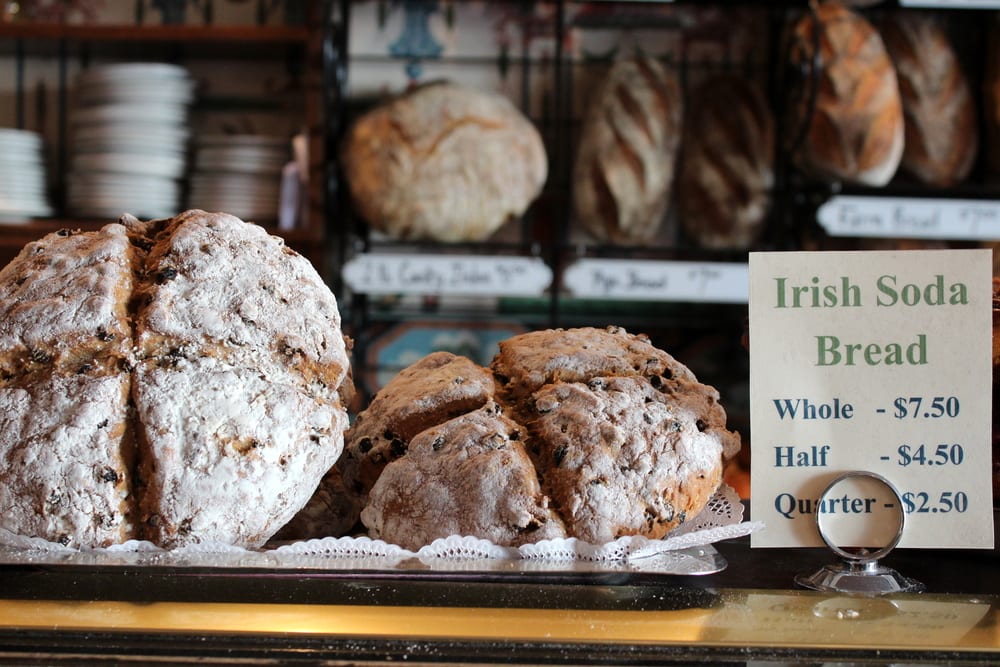
#3 Irish scones – Irish scones are often confused with Farls or Scones from around the UK. They are an American biscuit-like round bun that should be topped with jam and cream. You will hear arguments about how they should be made with mashed potato or raw grated rotation but save those for your boxty and farls.
Irish scones’ history is relatively simple they are descended from the Scottish flatbread bannock and although no one knows how they spread throughout the United Kingdom and Ireland my guess would be the travelling priests.
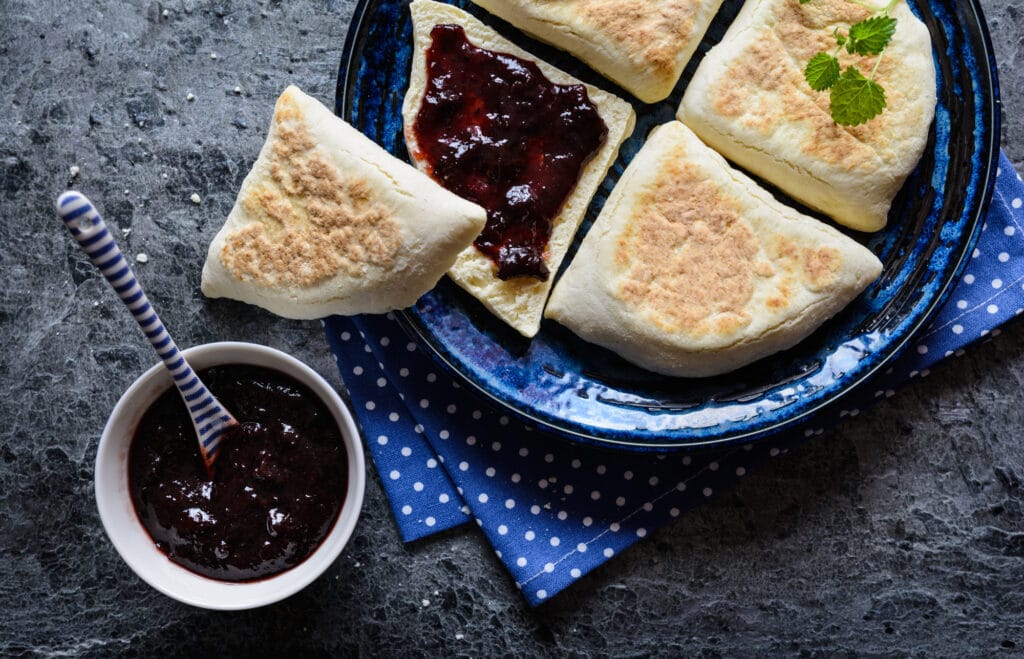
Irish Brown bread traditions
Depending on which part of the country you are eating your Irish Brown bread it will be shaped differently but every area has a legend or superstition baked into the bread. In the South, the cross shape that is cut into the bread is sometimes believed to be a religious symbol but it is also said that cutting the bread allows the devil or the fairies out.
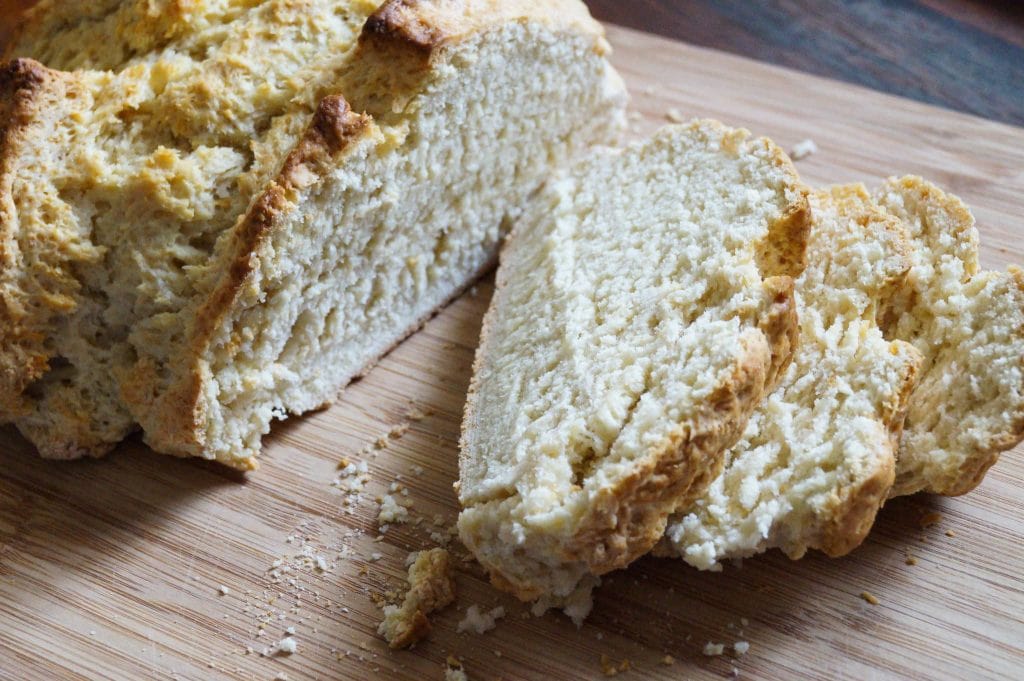
Others say it makes it easier to share the bread with 4 pieces. The deeply practical say it is to make the bread cook evenly. For many folks cooking the bread is done simply in a loaf pan and that is the way it can be bought at the local bakery or grocery store in Ireland these days.
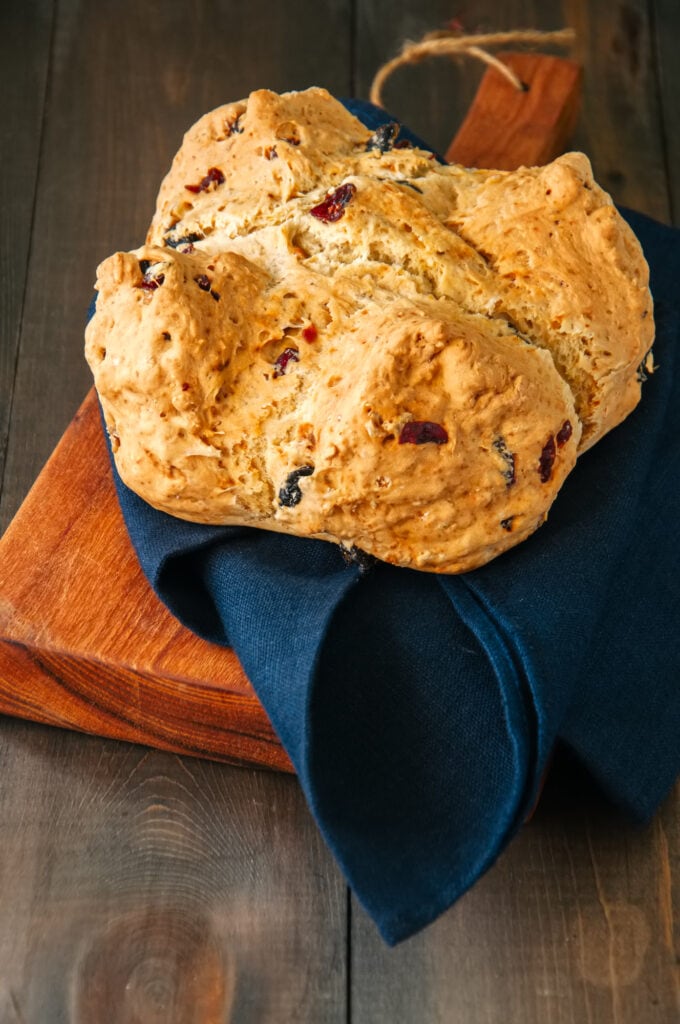
There are as many different Soda Bread recipes as there are mammies in Ireland. From Guinness Brown Bread to treacle enhanced, basil pesto and sundried tomato Irish brown bread has morphed into a gourmet treat for some and it still remains very easy to make and add to your baking repertoire.
Soda bread, together with potatoes, were the mainstays of the traditional Irish diet, but both were prepared a little differently for a special occasion. Halloween was the time for Apple Bread, while Currant Bread provided some fruity nutrition at any time of the year.
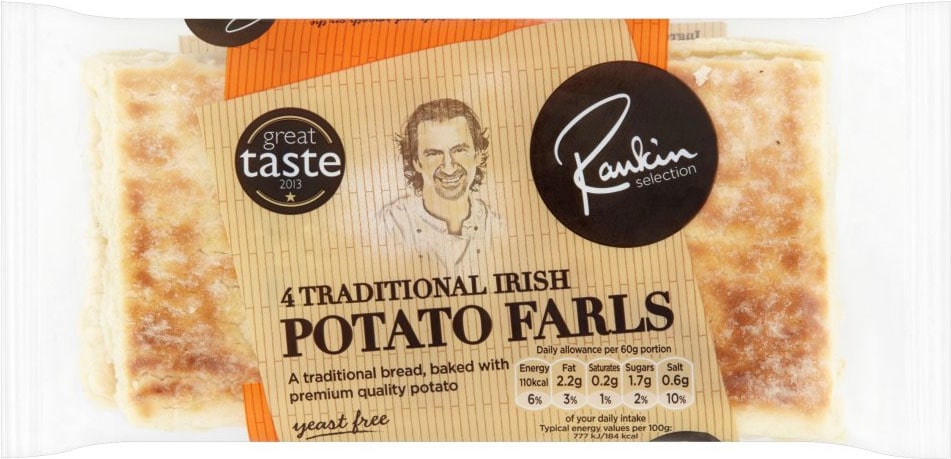
Soda farls are also known as boxty or potato pancakes – don’t contain anything extra to the basic recipe; the difference comes simply in the way the dough is cooked.
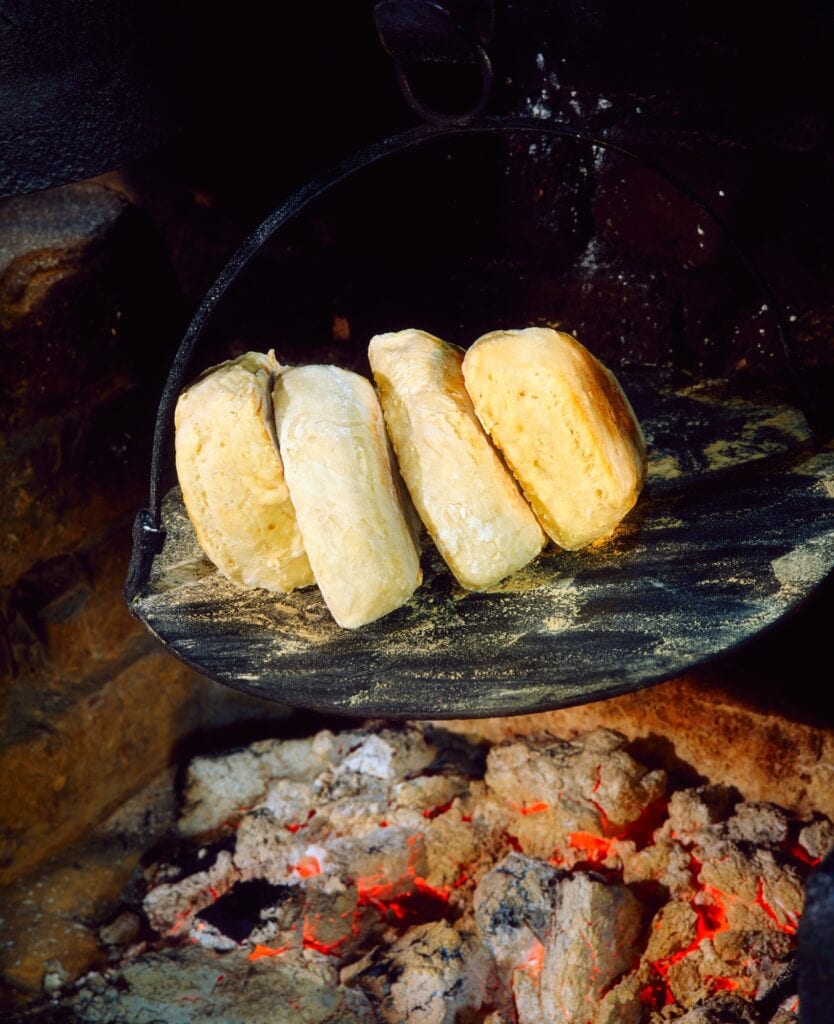
You can download the recipes here.
Irish brown bread Frequently asked questions (FAQS)
What is Traditional Irish Brown Bread?
Traditional Irish Brown Bread is a type of bread that originated in Ireland. It is made with whole wheat flour and has a rich, nutty flavor.
How do I make Irish Brown Bread?
To make Irish Brown Bread, you will need ingredients such as whole wheat flour, all-purpose flour, and buttermilk. Mix the dry ingredients together, then add the buttermilk. Knead the dough and shape it into a loaf. Bake the bread in the oven until golden brown.
What is the difference between Irish Brown Bread and Irish Soda Bread?
The only difference between Irish Brown Bread and Irish Soda Bread is the type of flour used. Irish Brown Bread is made with whole wheat flour, while Irish Soda Bread is made with all-purpose flour.
What are the dry ingredients for Traditional Irish Brown Bread?
The dry ingredients for Traditional Irish Brown Bread include whole wheat flour, all-purpose flour, and brown sugar.
Can I use Guinness in the recipe?
While Guinness is not a traditional ingredient in Irish Brown Bread, some recipes do include it for added flavor. You can try substituting a small amount of buttermilk with Guinness in your recipe but I can’t say it ever worked for me.
How long do I need to bake the bread?
The baking time for Irish Brown Bread can vary depending on the recipe and oven temperature. However, a typical baking time is around 40-50 minutes, or until the bread is golden brown and sounds hollow when tapped on the bottom.
Traditional Irish Brown Bread Recipe
Good old-fashioned whole wheat bread with just the basic ingredients. Buttermilk gives the loaf a crunchy crust and a good flavour. Can also be known as brown Irish soda bread depending on the type of flour used – brown is usually a whole-grain flour..
Ingredients
- 4 cups all-purpose or whole-wheat flour (preferably stone-ground wheat flour or whole-grain flour)
- 4 tablespoons dark brown sugar (or white if you don’t have dark brown)
- 1 teaspoon baking soda
- 1 tablespoon baking powder
- ½ teaspoon salt
- ½ cup margarine softened
- 1 cup buttermilk
- 1 egg
- ¼ cup butter melted
- ¼ cup buttermilk
Directions
- Preheat the oven to 375 degrees F (190 degrees C). Lightly grease a large baking sheet.
- In a large bowl, mix together flour, sugar, baking soda, baking powder, salt and margarine. Stir in 1 cup of buttermilk and egg. Turn dough out onto a lightly floured surface and knead slightly. Form the dough into a round and place it on a prepared baking sheet. In a small bowl, combine melted butter with 1/4 cup buttermilk; brush the loaf with this mixture. Use a sharp knife to cut an ‘X’ into the top of the loaf as this helps the bread rise.
- Bake in preheated oven until a toothpick inserted into the centre of the loaf comes out clean, 45 to 50 minutes. Check for doneness after 30 minutes. Tap the bottom of the loaf and if you hear a hollow sound the bread is ready. You may continue to brush the loaf with the butter mixture while it bakes. Serve slices of Irish brown bread with a pint of Guinness and some fantastic Irish stew.
Irish brown bread is more than just a delightful culinary creation; it’s a symbol of Irish culture and a testament to the resourcefulness of its people. With its rich history, simple yet wholesome ingredients, and unique baking techniques, this bread captures the essence of Ireland in every bite. Whether enjoyed with a traditional meal, as part of a cosy tea time or adapted to cater to specific dietary requirements, Irish brown bread is a cherished treasure that continues to delight and nourish generations.
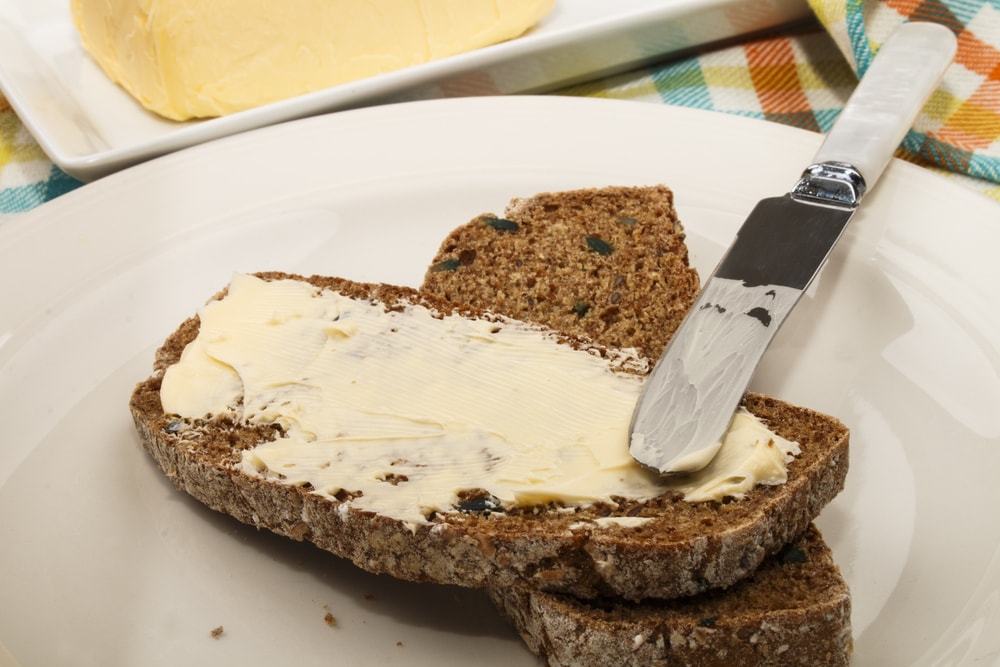
Traditional Soda Farl Recipe
INGREDIENTS
600g of white bread or plain flour
480mL of Buttermilk – you can also use regular milk with lemon as a substitute
2 teaspoons baking soda (sodium bicarbonate)
1 1/2 teaspoons of salt
Directions
Pour the flour, salt and baking soda into a bowl and mix.
Then add buttermilk and knead the mixture for a maximum of 2 to 3 minutes until you obtain a good dough that holds together.
Place the dough on a floured surface and then create a flattened round circle with the dough. Cut the dough into four triangle shapes. The triangles are then ready to fry in an oiled heavy-bottomed pan on the stovetop.
You can also bake it in the oven for about 45/50 minutes at 180°C. To make sure it is cooked properly, do the knife test to see if there is any soft dough in the centre.
Farls are the Northern Irish version but they are thicker than boxty and more “scone-like”. Farls are traditionally cooked in a griddle pan over an open fire. This bread is flatter than raised Soda Bread and often used for a Breakfast sandwich to be eaten on the go. When leftover mashed potatoes are added they become Potato Farls or Boxty depending on the other ingredients used. Farls simply means 4 parts.
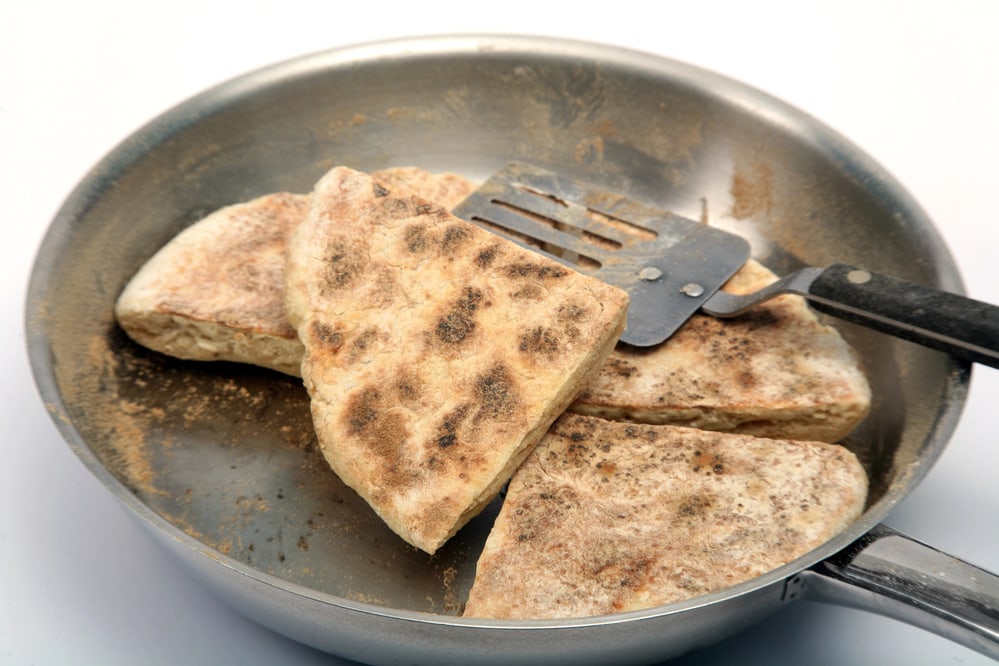
download the PDF recipe for Soda Farls and Irish Brown Bread here
Originally published on Headstuff Ireland
You might also like
15 tips for celebrating St. Patrick’s Day in Dublin
What is Irish Boxty? Traditional Irish potato cakes
Traditional Irish food 25 of the most popular Irish dishes
Pin it to save it
